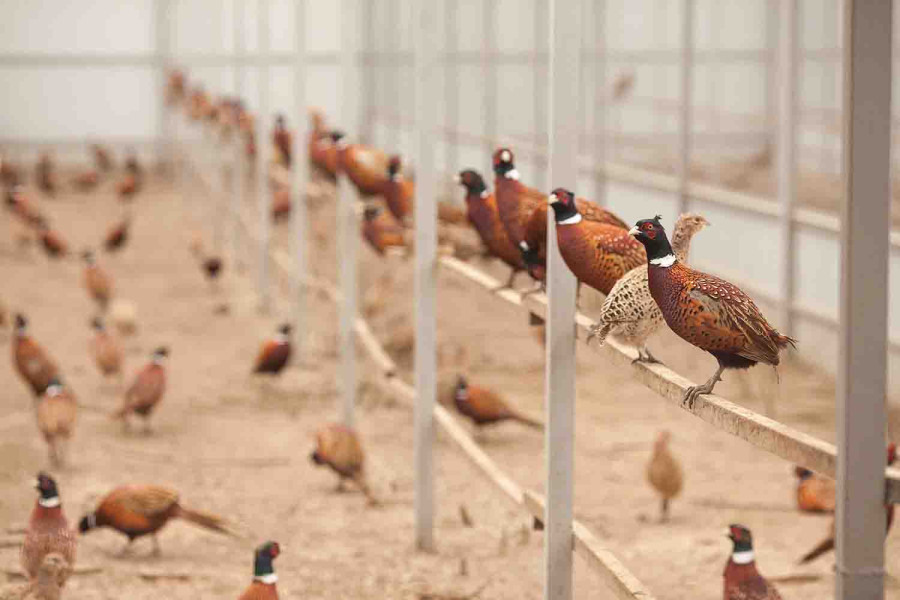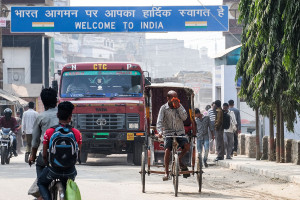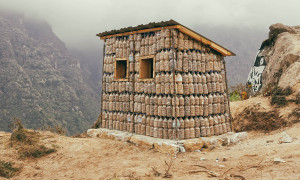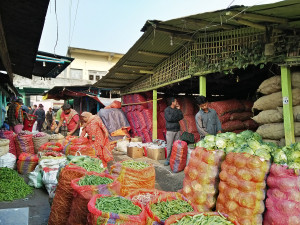Money
Pheasant farms thrive in western Nepal on rising demand
The wildfowl farmers say they are receiving big orders from institutional buyers, mostly from luxury hotels in India.
DR Pant
Bikash Neupane, a local of Chure rural municipality in Kailali, started pheasant (Kalij) farming, a wildfowl farming as an alternative to poultry four years ago. His farming has prospered.
He leased 30 ropanis and initially started with 200 chicks. Now, he owns more than 3,000 pheasants.
Neupane said he invested Rs3 million initially. “The investment has now reached Rs7 million.”
He sells the birds to nearby markets such as Dhangadhi, Mahendranagar and Chisapani.
“Nowadays, demand is coming from the Indian market,” said Neupane. “Most of the orders are coming from Kerala in India. I have not been able to meet the demand.”
Neupane said his monthly profit ranges from Rs150,000 to Rs200,000.
Hari Bhattarai, another farmer, too, started pheasant farming four years ago with an initial investment of Rs1.5 million.
Now, he is planning to market his product in Lucknow and New Delhi in India.
“There is huge demand from the luxury hotels in India,” said Bhattarai.
Eight species of pheasants are recorded in Nepal—Himalayan Monal, Cheer Pheasant, Satyr Tragopan, Common Peafowl, Red Jungle fowl, Blood Pheasant, Koklass Pheasant and Kalij Pheasant.
Among them is the charismatic national bird of the country Danphe. Cheer Pheasant (Cheer), Himalayan Monal (Danphe) and Satyr Tragopan (Munal) are protected species listed under the National Parks and Wildlife Conservation Act, 1973.
There has been illegal hunting of these birds.
The National Park and Wildlife Conservation Act prohibits the farming and killing of these wild fowls.
But the government amended the regulation and allowed ringed-neck pheasant farming by importing eggs.
According to the regulation, interested farmers should obtain permission from the Department of National Parks and Wildlife Conservation by submitting a business plan.
The registration fee is Rs25,000.
Pheasants are scarce in the Indian market, as they aren’t commercially produced.
Global Wild Farming Agro started three years ago with Rs10 million and is running pheasant farming in 25 ropanis.
The company also has three more farms in Ningladi and Budhi Tola.
Former provincial Minister for Financial Affairs and Planning, Jhapat Bohara and former Nepal Army general Prem Shahi have invested in pheasant farms.
The pheasant farms, close to the Chure range, are thriving due to the favourable climate.
The farmers state that a moderate temperature of 18 to 22 degrees of Celcius is best for pheasant farming. The birds usually lay eggs in spring. They lay an egg for around 12 days in a season.
These birds are kept in the bushlands enclosed by mesh wire fencing.
Hari Bhattarai, a local farmer, said he has 100 birds and they lay eggs every day.
“I send them to the hatchery for incubation,” said Bhattarai.
According to the farmers, a pheasant weighs a kilo in six months. The maximum weight of the bird is one-and-half kilos.
Each bird is sold at Rs1,500 to Rs2,000.
The locals have been increasing their investment in pheasant farming due to the rising demand.
“Nowadays, we are receiving huge inquiries and orders from institutional buyers, mostly the big and luxury hotels in India,” said Surendra Khadayat, manager of Global Wild Farming.
There is no official data on the exported birds.
Bikash Neupane, a farmer who’s been farming pheasants and turkey, said pheasants are less infected with diseases.
“They grow well in wild habitats. But they have to be immunised,” said Neupane. “I haven’t lost a single bird due to disease.”




 18.12°C Kathmandu
18.12°C Kathmandu














